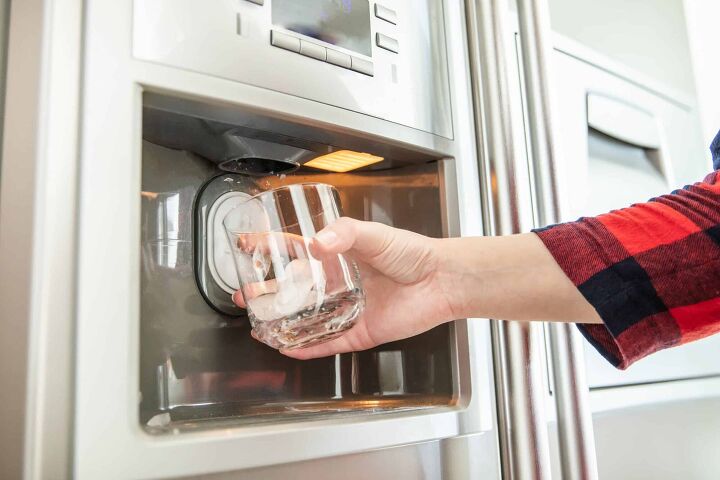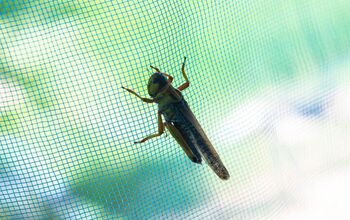Copper Vs. Plastic Refrigerator Water Lines: Which One Is Better?

Choosing the right refrigerator line is important because it affects the whole unit’s performance. Refrigerator lines supply water to the dispenser and ice maker, so it’s important to choose a durable material. So, what is better; copper or plastic refrigerator water lines?
Copper refrigerator lines are stronger than plastic lines, but they are prone to kinks and corrosion. The more affordable option is plastic refrigerator lines, which are still durable but can break more easily. Leaks are more common with plastic refrigerator lines, but they are much easier to install than copper lines.
Both materials are useful and effective, and budget is ultimately one of the most important things to consider. Follow along as we settle the important debate: copper vs. plastic refrigerator water lines.
Do You Need Appliance Installation or Replacement?
Get free, zero-commitment quotes from pro contractors near you.

Copper Vs. Plastic Refrigerator Water Line
The most important thing to consider is durability and the likelihood of a leak when you choose a refrigerator water line. Homeowners typically choose between three materials for refrigerator water lines. With that said, copper and plastic are the most common refrigerator water line materials because of their durability and ease of installation.
- Plastic or PVC refrigerator water lines are affordable and easy to install. However, plastic refrigerator water lines aren’t as durable as copper and they can break more easily. Some homeowners report that plastic lines leave a strange taste in the water and ice.
- Copper is another great choice since it is not too expensive and it doesn’t affect the taste of the water. The most common issue with copper is that it kinks sometimes and blocks the water from coming out. Despite being metal, copper refrigerator lines are unlikely to corrode even after prolonged water exposure.
- Braided stainless steel tubing is the best material for refrigerator water lines. There is no risk of corrosion or a strange taste in the water. However, it is more expensive than copper refrigerator water lines so it is not as common.
Copper refrigerator water lines are better than plastic, and it costs up to $230 to install. You can run a plastic water line for as little as $65, but you sacrifice quality compared to copper water lines. Many homeowners choose plastic refrigerator water lines for the cost and convenience, but copper is the stronger material.
A Small Line that Can Cause a Big Mess
Even though your water supply line is only ¼-inch, it can make a humongous mess if it gets damaged. Both plastic and copper have pros and cons, of course. But you want to make sure that you get the one that is best for your particular needs.
Although plastic tubing is more flexible than copper tubing, it is also the easiest to crack and cause a big leaky mess. Copper may not crack or leak, but it can kink, causing you to wonder why the water stopped working.
Plastic is easier to work with and cut but copper is more rigid and durable. Then there is the strange taste issue. More than a few plastic line users have complained about a plastic taste to their water or ice cubes. You won’t have that problem with copper pipes.
Braided Stainless Steel
If you want to bypass all of these issues, go with the braided stainless steel tubing. There will be no worry about cracks, leakage, kinking, or corrosion with this type of material. Nobody has ever claimed that it causes a funny taste either.
And the cost is really not that much higher. You might pay one or two dollars more, which makes up for itself since it lasts much longer than either plastic or copper. It is easier to work with, comes with its own connections, and will probably outlast your refrigerator and you.
How to Install Refrigerator Water Line
A homeowner can install a refrigerator water line without professional help with the right precautions. You install both plastic and copper water lines in the same way, but plastic is easier to install. Let’s take a look at how you can easily install a copper or plastic refrigerator water line.
Step One: Planning the Water Line
The first step is planning how to get the water to your refrigerator. If there is no hookup behind the fridge, you either have to run it from the sink or dishwasher. Measure how much line you will need and add five or six feet to that. Then add a few more feet just in case.
Step Two: Turn Off the Water
Always turn off the water to the kitchen or even the whole house if you have to. As long as you do not have any water running to your sink water line where you will be working. Turn on the sink to let out the water in the lines.
Step Three: Install Your Line (with a shut-off valve)
Tap into your sink line shut off valve with a tee fitting. Make sure the tee fits the threads of the valve you are using as well as the ¼-inch water line for the fridge. Disconnect the sink and attach the tee fitting to your shut off valve. Reconnect the sink line and then connect your refrigerator water line.
Step Three-A: Install Your Line (without a shut-off valve)
Using a self-tapping saddle valve, attach it to the water supply line. If you are using a tee stop valve, you need to cut a section of the sink water supply line. Mark this section before cutting. Use pipe cutters to cut the pipe and deburr it before attaching the new valve.
If you are using a self-tapping saddle valve, do not turn the valve to pierce the line until the water is hooked to the back of the refrigerator. Once everything is hooked up, turn the valve so the needle pokes a hole in the line. Be sure to turn it back the other way afterward or the water will not flow.
Step Three-B: Install Your Line (into another water line)
If you do not have cabinets to run the line through, you can go through your kitchen floor or the wall to splice into another water line. Just make sure there are no piping or wiring in the way first. Drill a ¼-inch hole to run the line and follow the above steps to install a self-tapping saddle valve or tee stop valve.
Step Four: Running the Line
Feed the tube through the path you planned for it. You may have to drill some holes through your cabinets or floor to feed the line to the back of the fridge. Make sure the line does not kink as you go.
Quick Tip: Secure the line every two or three feet with a cable or nylon clamp along the cabinet or floor joists.
Step Five: Connecting the Water Line
Wrap the threads with plumbing tape before attaching to prevent leaks. Hand tighten the line and then use a wrench to tighten it up. Attach the line on the water supply valve and tighten that nut as well.
Step Six: Checking and Priming
Check all the connections to make sure they are all tight. Then turn the water back on and run about a gallon of water through the new line to clear it out. You should also not use the first two batches of ice from the ice maker.
Do You Need Appliance Installation or Replacement?
Get free, zero-commitment quotes from pro contractors near you.

Summing It Up
Copper refrigerator water lines are better than plastic in terms of durability and taste. Some homeowners report a strange taste with plastic water lines, but that isn’t a problem with copper. Plastic refrigerator water lines are cheaper than copper, but they are easier to damage.
Braided steel is considered the best material for refrigerator water lines, but they are uncommon. Copper refrigerator water lines cost up to $230 to install, and you can run plastic water lines for $65.
Related Guides

I am a DIYer who loves writing about anything home-related. When I am not writing, you can find me studying for my PhD in Psychology, photographing nature, and swimming at the lake with my grandkids.
More by Patricia Oelze













![How Much Weight Can a 4×4 Support Horizontally? [It Depends!]](https://cdn-fastly.upgradedhome.com/media/2023/07/31/9070333/how-much-weight-can-a-44-support-horizontally-it-depends.jpg?size=350x220)














